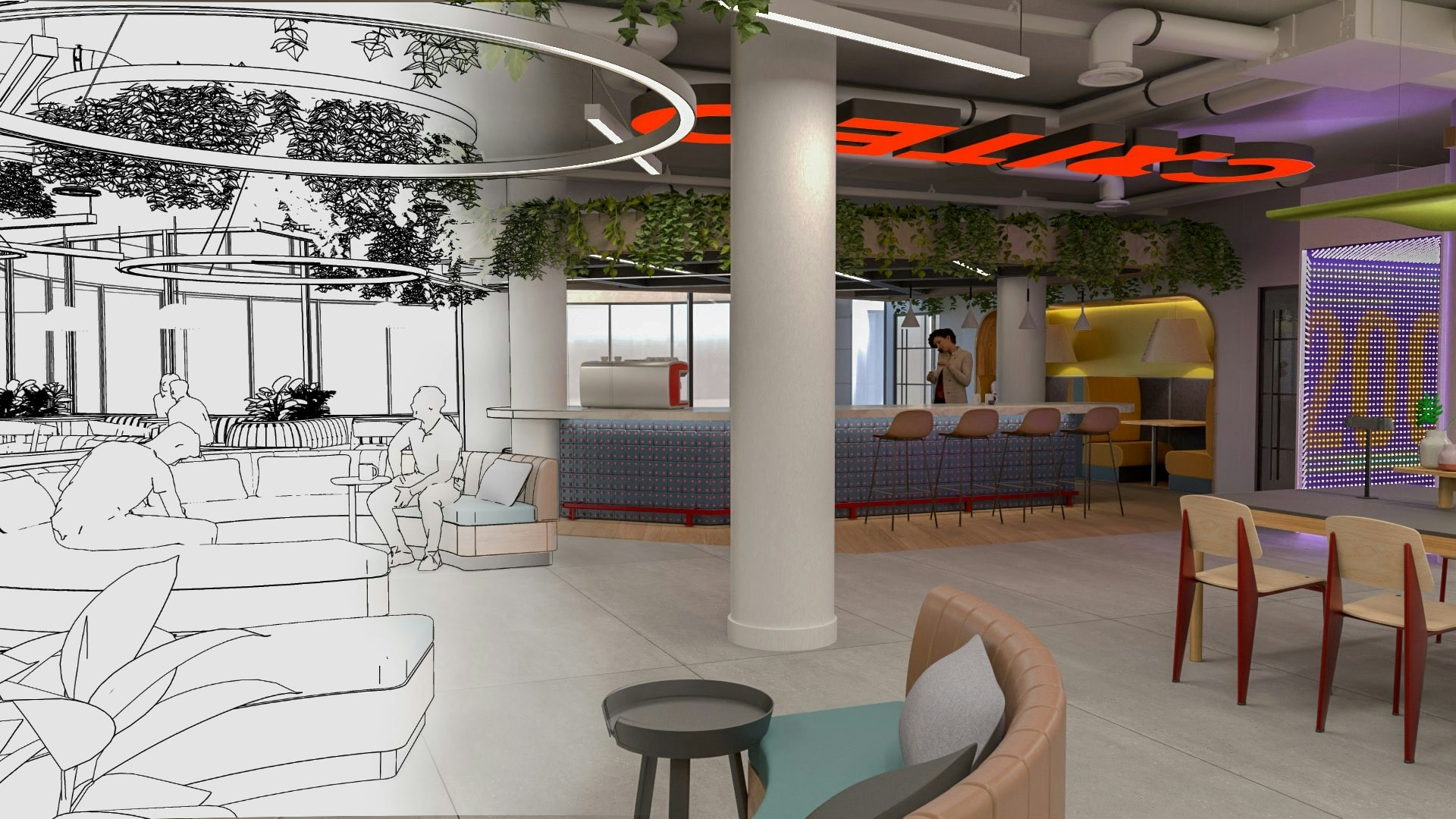As the pendulum continues to swing between remote work and full-time in the office, we find ourselves part-way through the arc in a time of hybrid working, with many companies opting for a mandated attendance of two to three days per week in the office.
This can have quite an impact on the demands your people make in the workplace, particularly if it has been previously configured for higher levels of flexibility. Increasing attendance from around 20% (the norm for fully flexible working) to a mandated 60% (three days) is quite a jump. If you now consider the fact that Mondays and Fridays typically have very low attendance, you are likely to have around 85% attendance from Tuesday to Thursday. That will entirely change the needs of the workforce.
When the main reason for coming into the office is to attend meetings and group work, to base yourself in a breakout or drop-in space for the occasional day is no hardship. But if people are coming in because it is mandated, then they will be doing a lot more desk-based work and for that, they will want…a desk. They will not want to share that desk during the
day. If they have to leave it at any point, say for a meeting, they will mark their territory with bags, coats and other personal items. They may not be too concerned about always being at the same desk, but it is likely that teams, over time, will gravitate to particular areas of the office ensuring they connect with other members of the group.
This will effectively make those no-go areas for other teams, driving the entire organisation back towards one person per desk. Add to this the much higher prevalence of one-to-one video calls and the shape of the meeting room portfolio will need to change as well. Larger numbers of small spaces will be required to meet the demand for privacy, and separation from the open plan.
So, what does this mean for all those companies that cheerfully downsized their portfolios just after the pandemic?
Well, the Square Ft per head ratio is going down. Offices are becoming more densely populated. This is achieved by taking a somewhat jaundiced look at all the spaces that are neither desks nor meeting rooms. So, all the breakout spaces are being reviewed, the games room, the quiet rooms, and even the size of the cafeteria are coming under scrutiny.
The real challenge now, for designers and workplace professionals, is how to make the space beautiful and appealing whilst accommodating the increased daily headcount. I am hopeful we will see more “design” in desks and chairs. As they begin to make up the majority of elements in the space, I will be looking for shape and colour as well as efficient operability. As I have previously predicted, we will see a greater use of the free-standing
pod instead of constructing many smaller meeting spaces, and there is an opportunity for creativity in the way these are used.
I cannot say how far the pendulum will swing before starting its return journey, but I sense we are not yet in a stable period for space and design. So, the watchwords need to be flexible, modular, and built for change.
